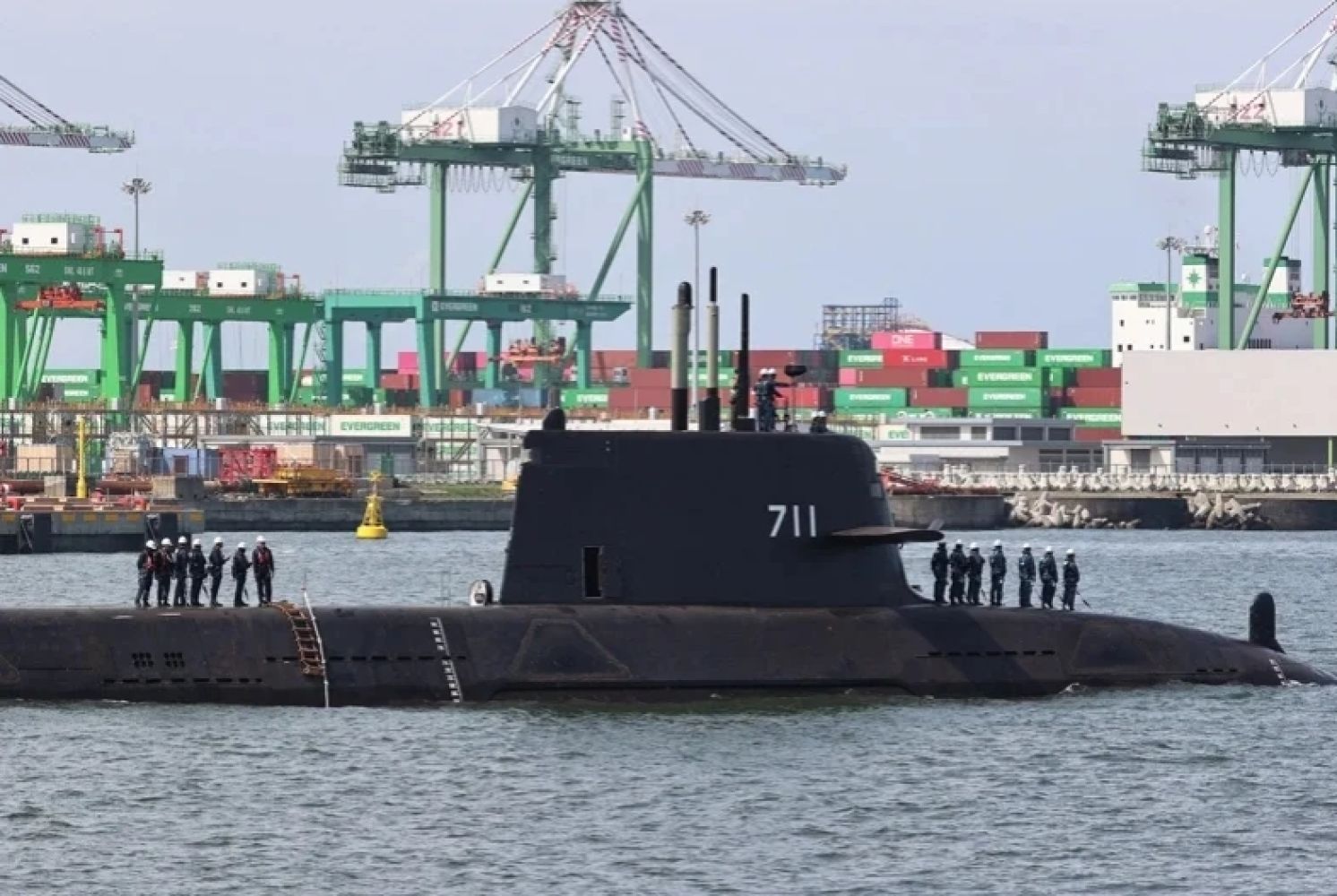
Another Key Figure Resigns: Taiwan's Indigenous Submarine Project at Risk
China Times Editorial, October 1, 2025
Taiwan’s Indigenous Defense Submarine (IDS) prototype Hai Kun has failed to complete its sea trials as scheduled in September. On September 28, retired admiral Huang Shu-kuang, National Security Council adviser and the leading figure behind the IDS project, tendered his resignation. The timing has raised questions about whether the program—and even Taiwan’s broader defense planning—could be thrown into disarray, leaving President Lai Ching-te and the Ministry of National Defense with a political and military headache.
Under the ruling Democratic Progressive Party’s (DPP) strong anti-China stance, rational debate on defense issues is often dismissed as “echoing Beijing.” Yet following the August 27 resignation of former CSBC Corporation Chairman Huang Cheng-hung, citing family reasons, Huang Shu-kuang’s departure under the same pretext underscores that problems are indeed serious. A political and military storm is unfolding—one that political spin alone cannot conceal.
The Office of the President issued a statement praising Huang for leading the team to overcome enormous difficulties, calling the IDS an “important milestone in Taiwan’s path toward defense self-reliance.” At first glance, this suggests the Hai Kun project is progressing smoothly and is already complete. In reality, the vessel has yet to conduct critical submerged trials and its delivery remains uncertain.
Originally slated for key sea trials in April, Hai Kun only carried out three limited surface tests in June and July before entering dry dock for system calibration, watertightness testing, and inspection of underwater equipment. The submarine remained in dry dock for 61 days before reemerging on September 2—without conducting any trials. Experts warn this is highly unusual and points to major problems. Former Chief of the General Staff and retired admiral Lee Hsi-ming, a veteran submariner, noted the issue now is not whether Hai Kun can defend Taiwan, but whether it can meet even basic operational goals.
According to the project timeline, Hai Kun was supposed to complete its most difficult submerged trials in September. New CSBC Chairman Chen Cheng-hung stated the vessel would undergo shallow-water and then deep-sea trials, including torpedo tests, but CSBC general manager Tsai Kun-tsung has already admitted the September schedule was impossible. Unlike in the past, when the navy and CSBC would insist the project would meet deadlines “against all odds,” officials now avoid mentioning the November handover date at all.
The two-month gap in testing coincided with leadership changes at CSBC and now Huang Shu-kuang’s resignation. In the program’s early days, Huang and then-CSBC chairman Cheng Wen-lon had boldly declared they would personally lead the Hai Kun on its maiden dive. That promise, critics now say, has proven little more than political theater.
As an extra-bureaucratic project leader, Huang bypassed the navy and defense ministry, pursuing “legal but unconventional” methods to achieve political impact. One example was Hai Kun’s “dry launch” ceremony—unprecedented in naval history. Now, the consequences of such shortcuts and political showmanship are surfacing, with growing negative fallout. With Huang gone, Hai Kun unfinished, and CSBC leadership reshuffled three times, the program’s underlying weaknesses are increasingly laid bare.
The DPP administration, critics argue, is driven more by ideology and political ambition than sober defense planning. Huang had once claimed that by 2027 Taiwan would have two domestically built submarines to join its two existing Hai Lung-class boats, giving Taiwan the ability to lock down the Miyako Strait to the north and the Bashi Channel to the south, pinning down the People’s Liberation Army (PLA) Navy within the first island chain. Today, such declarations are proving to be little more than political mythmaking.
U.S. experts have also raised concerns. Matt Pottinger, former Deputy National Security Adviser, and Ivan Kanapathy, former senior director of the National Security Council, have questioned IDS’s cost-effectiveness and urged that Taiwan align it more closely with “asymmetric defense.” They recommend reassessing resource allocation once the prototype is complete, and consider investing in more diverse, affordable systems. Lee shares this view, noting that while he hopes the program succeeds, NT$50 billion (about US$1.6 billion) for a single submarine could otherwise buy large fleets of advanced drones and unmanned surface vessels.
Given the severe imbalance in cross-strait military power, pursuing an open-ended arms race will only deepen Taiwan’s disadvantage. Modern warfare is being transformed by unmanned systems, robotics, artificial intelligence (AI), and electronic warfare. Meanwhile, mainland China has showcased a wide range of anti-submarine and undersea warfare capabilities, highlighting the gap between IDS’s vision and military reality. Coupled with execution setbacks, the DPP administration must reassess the program’s direction.
Despite these warning signs, the DPP insists on pressing ahead. Even before Hai Kun finishes testing, the government has launched a plan to mass-produce seven submarines, with a total budget of NT$284 billion (about US$9.3 billion)—an average of NT$40.57 billion (about US$1.3 billion) each. For 2024, NT$2 billion (about US$65.7 million) has already been earmarked. Critics argue that while the DPP clings to its “resist China to protect Taiwan” mantra, pouring vast sums into the submarine program will not meaningfully strengthen deterrence. Instead, this is just the tip of the iceberg: without improving cross-strait relations, no amount of defense spending or force buildup can ensure peace and stability in the Taiwan Strait.
From: https://www.chinatimes.com/opinion/20251001004225-262101?chdtv